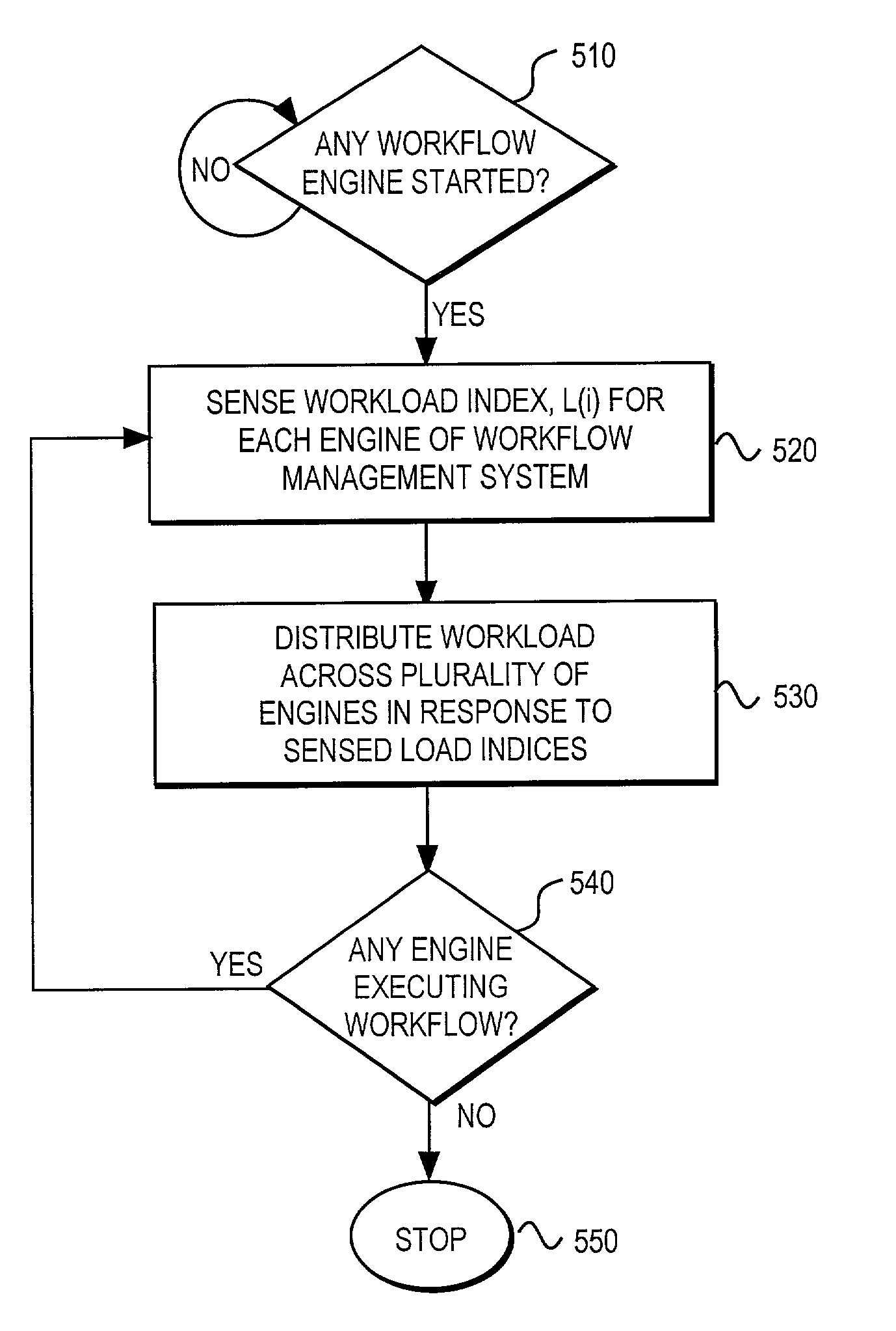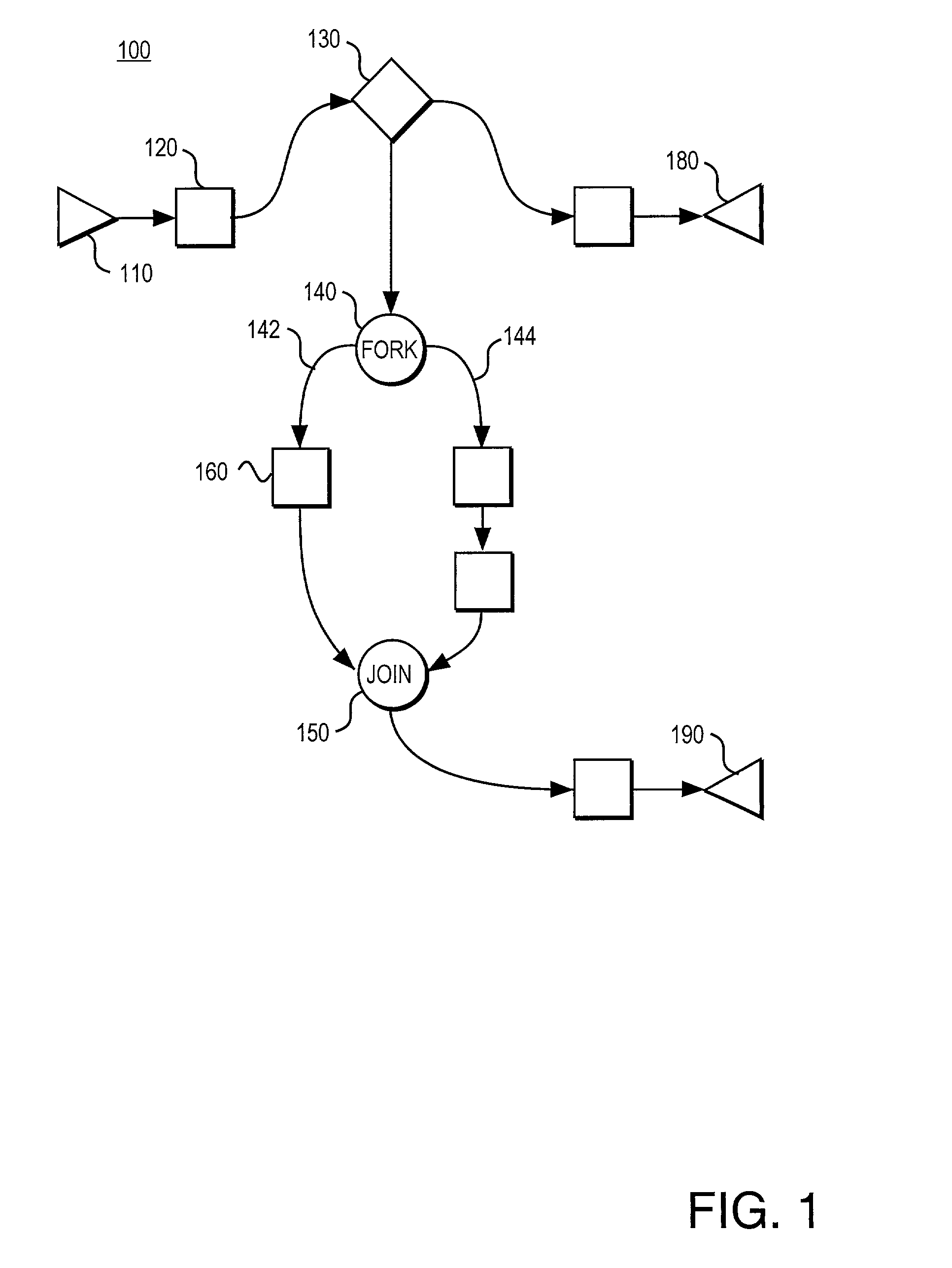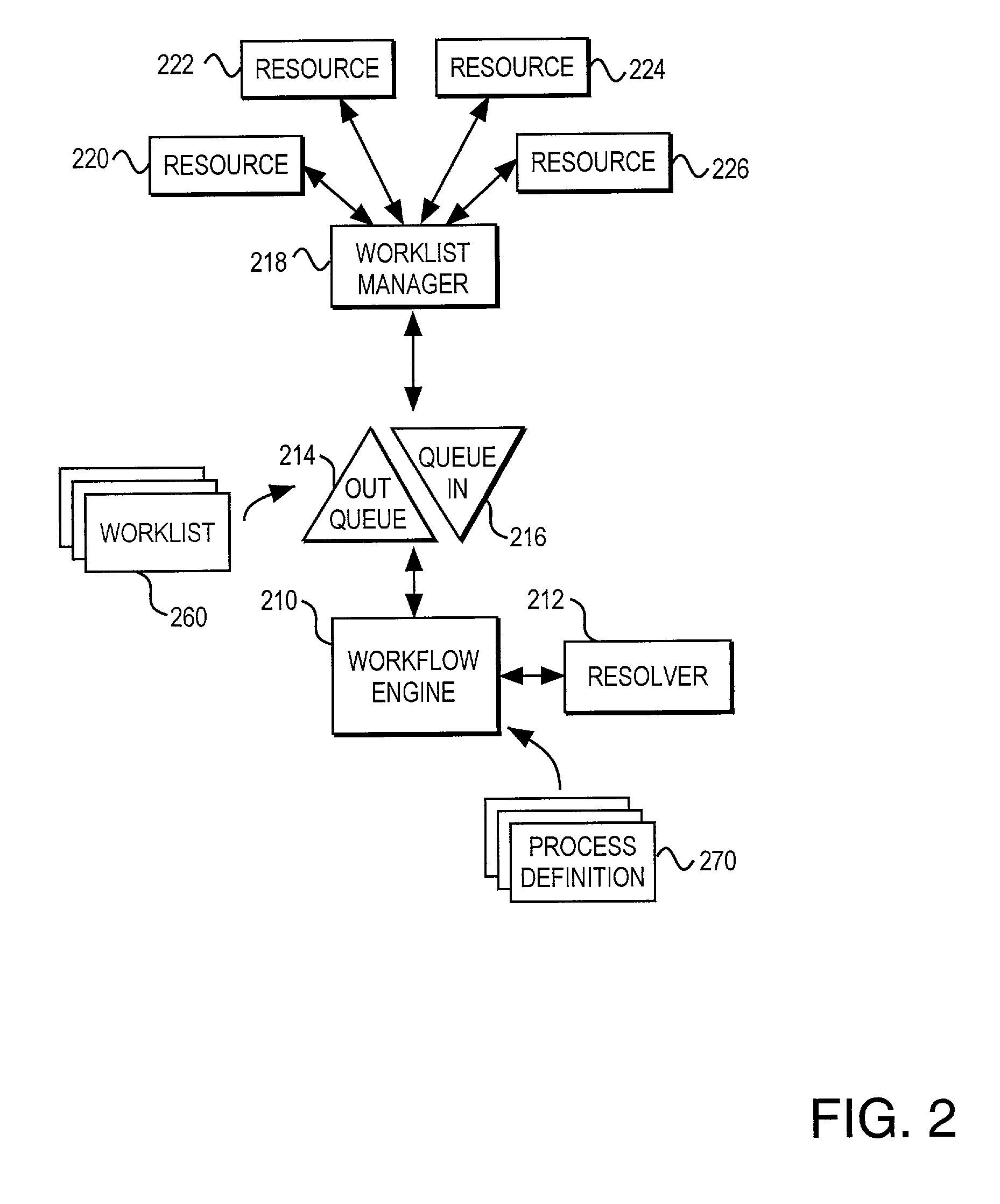Method of load balancing a distributed workflow management system
a workflow management system and distributed technology, applied in computer control, multi-programming arrangements, instruments, etc., can solve problems such as the approach fails to equitably balance the load across a heterogeneous collection of workflow management systems having different resources and capabilities
- Summary
- Abstract
- Description
- Claims
- Application Information
AI Technical Summary
Benefits of technology
Problems solved by technology
Method used
Image
Examples
Embodiment Construction
[0018]Processes may be modeled as a directed graph having at least four types of nodes including activity nodes, route nodes, start nodes, and completion nodes. A process definition can be instantiated several times and multiple instances may be concurrently active. Activity executions can access and modify data included in a case packet. Each process instance has a local copy of the case packet.
[0019]FIG. 1 illustrates one embodiment of a process defined by a directed graph of nodes. The process is defined as a collection of nodes and input and output parameters. The process definition indicates how the nodes are connected to each other. The process definitions are stored in a database that can be accessed by a workflow engine.
[0020]Node 110 represents a start node. The start node defines the entry point to the process. Each hierarchical definition level has at least one start node. Nodes 180 and 190 are completion nodes. A process may have more than one completion node at a given ...
PUM
 Login to View More
Login to View More Abstract
Description
Claims
Application Information
 Login to View More
Login to View More - R&D
- Intellectual Property
- Life Sciences
- Materials
- Tech Scout
- Unparalleled Data Quality
- Higher Quality Content
- 60% Fewer Hallucinations
Browse by: Latest US Patents, China's latest patents, Technical Efficacy Thesaurus, Application Domain, Technology Topic, Popular Technical Reports.
© 2025 PatSnap. All rights reserved.Legal|Privacy policy|Modern Slavery Act Transparency Statement|Sitemap|About US| Contact US: help@patsnap.com



